Bald Eagles of Broward County, Florida
› ARCHIVED Pembroke Pines OBSERVATIONS & PHOTOS FROM PRIOR NESTING SEASONS
›
ARCHIVED 2018-2019 Observations of Pembroke Pines Bald Eagle Nest BO-002
JAN 12: Evidence that eaglet has hatched
JAN 12: Evidence that eaglet has hatched
|
Administrator
|
This post was updated on .
I arrived at the nest on JAN 12 at about 9:05 AM and departed at 10:10 Am. Luis had been observing and said he believed that the pair had exchanged incubation duties just before he arrived. He also said an earlier observer saw an adult carry in prey consisting of a white bird. The male (Pride) was sitting high on the nest and the female (Jewel) was roosting nearby to the right.
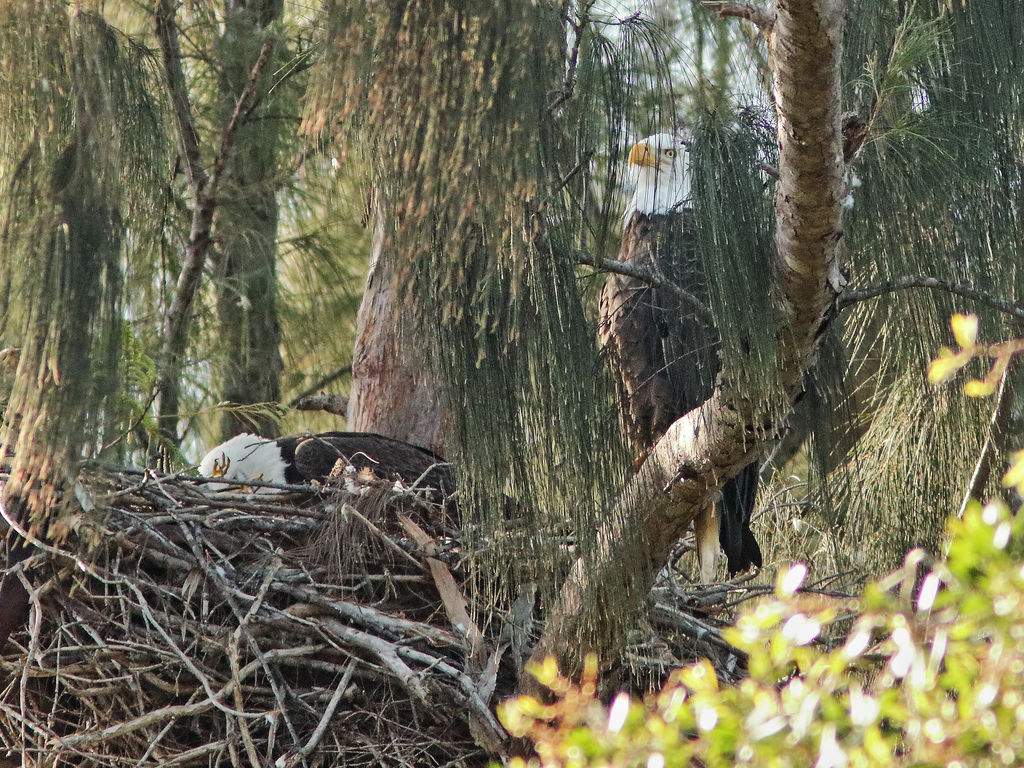 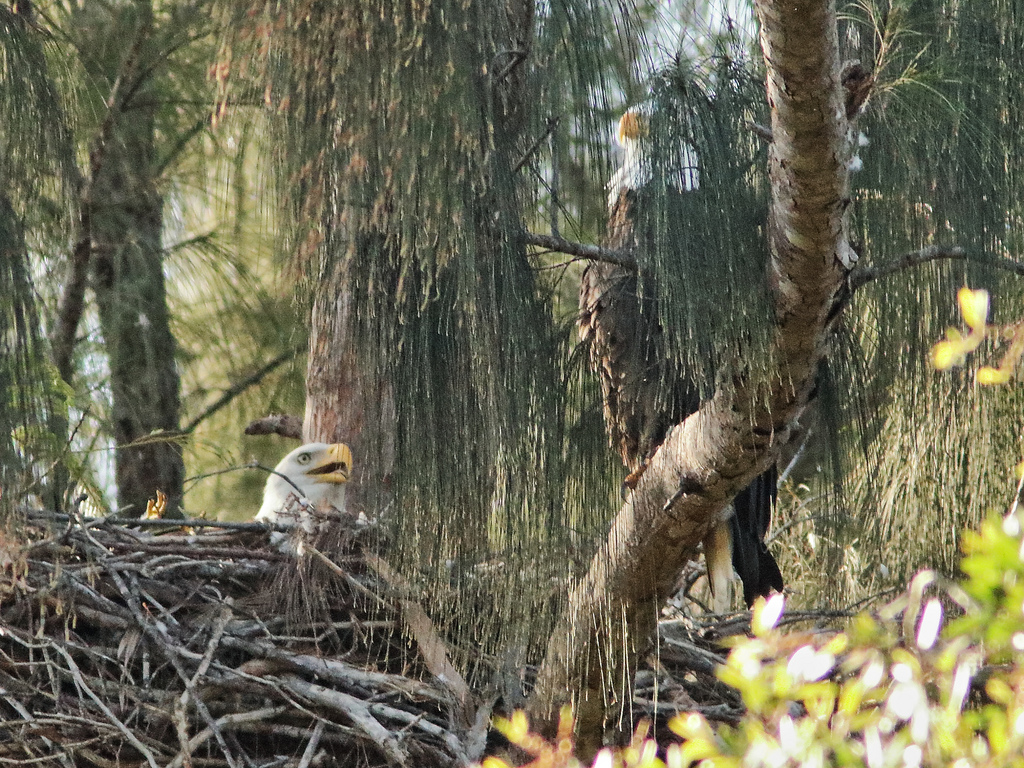 Soon, Jewel flew out to roost on the tall pine to the east of the nest. 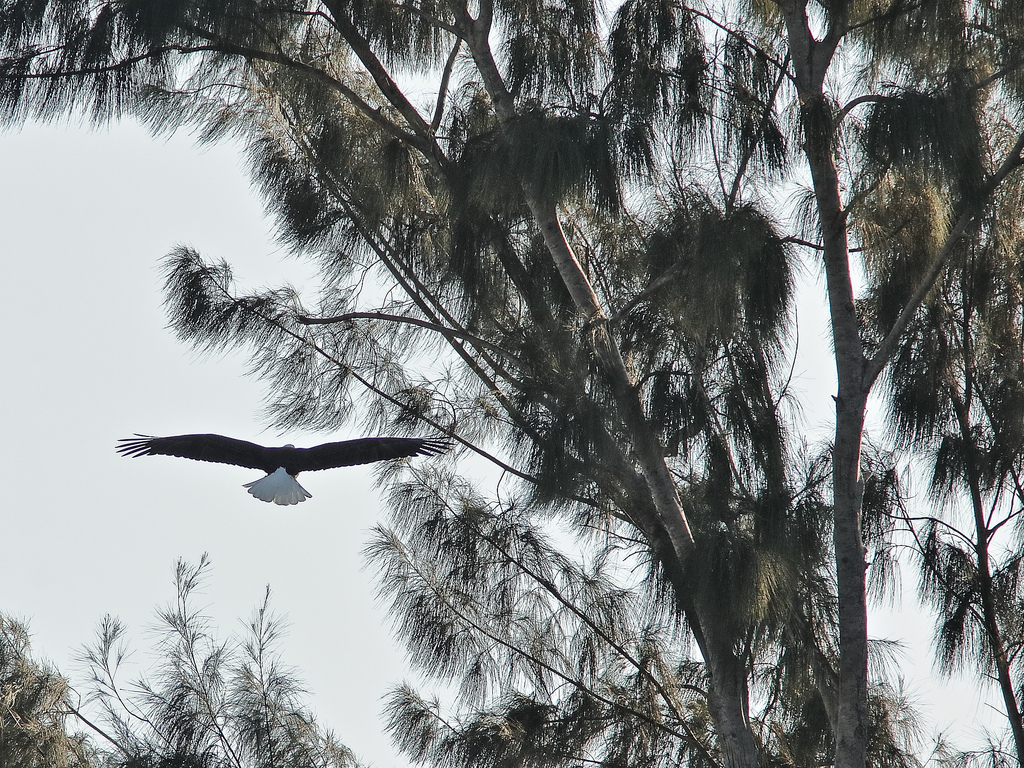 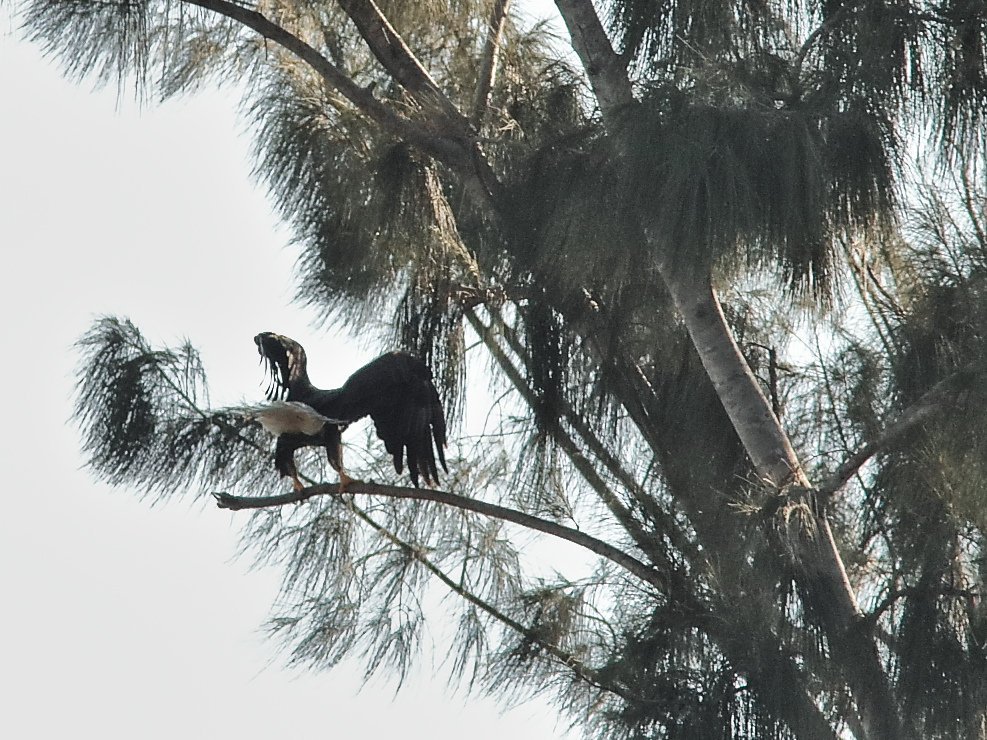 Note that Jewel's hind toe (hallux) extends proportionately longer than that of the male, an identifying feature of the female: 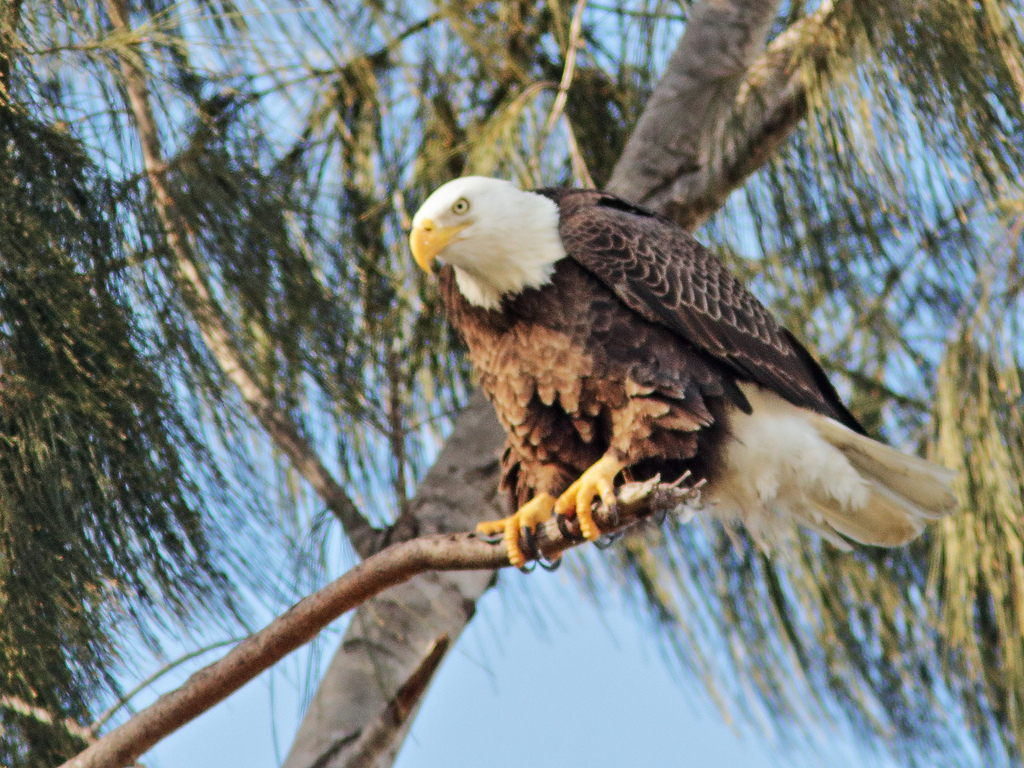 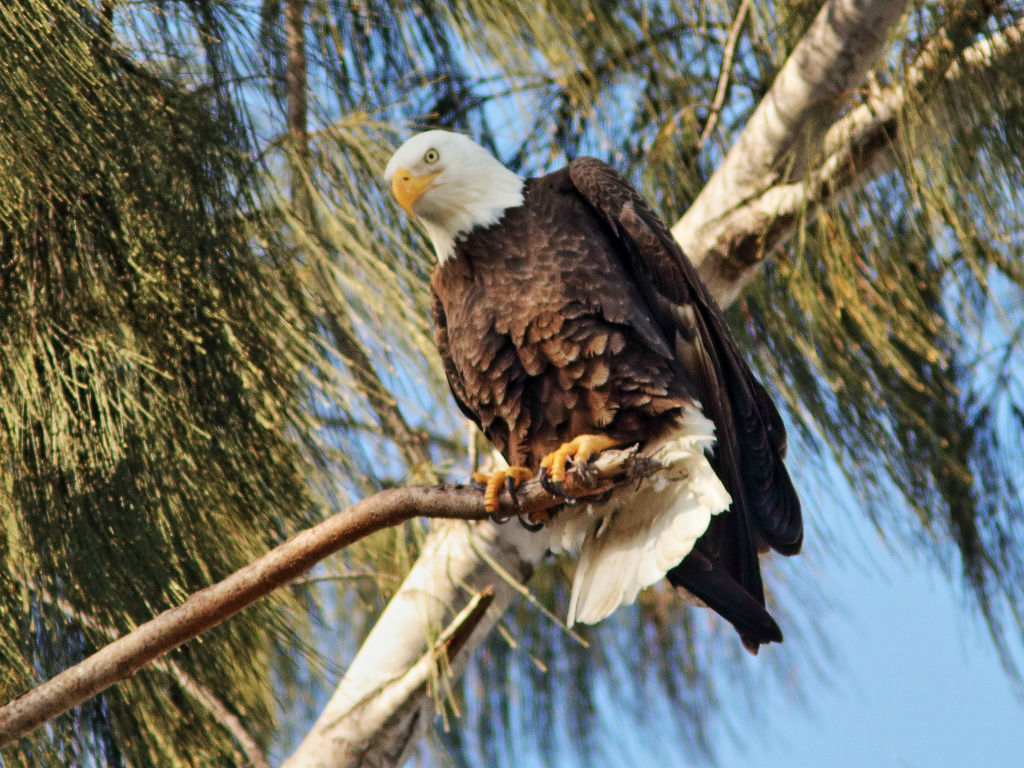 Jewel prepares to launch:  She then flew off, circling as she disappeared to the north, probably over the large lake which is located at the SE corner of Sheridan and US-27. 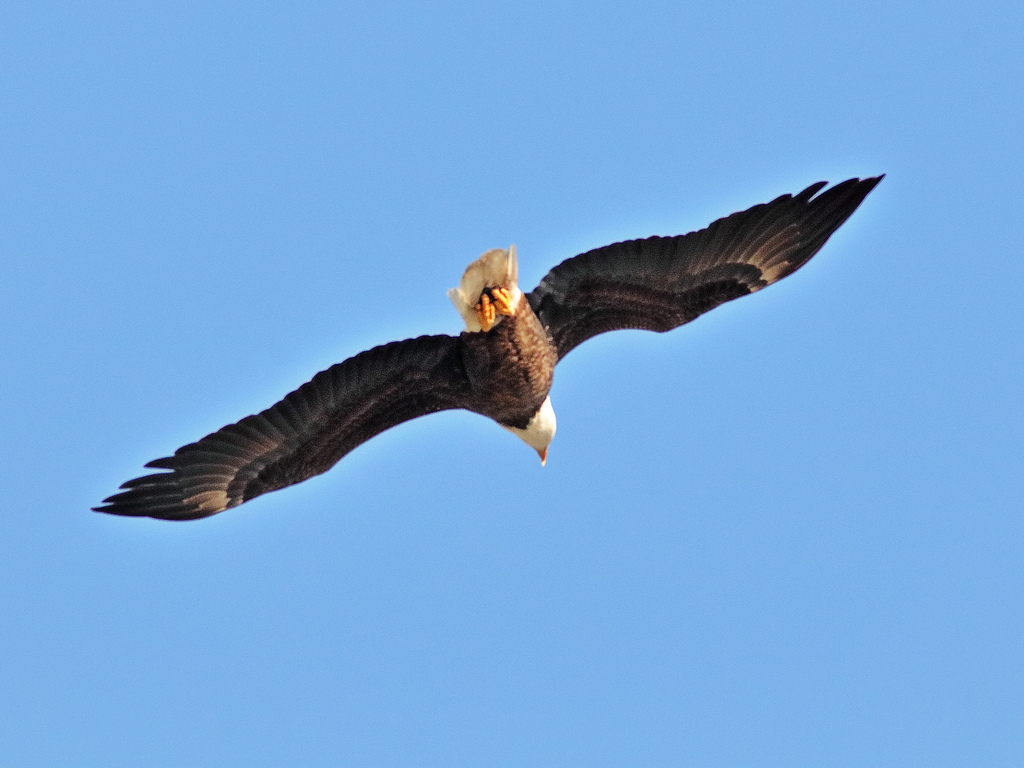   Pride continued to appear busy at the nest, never sitting deep, which suggests that at least one eaglet may have hatched and also that he may not be incubating any eggs: 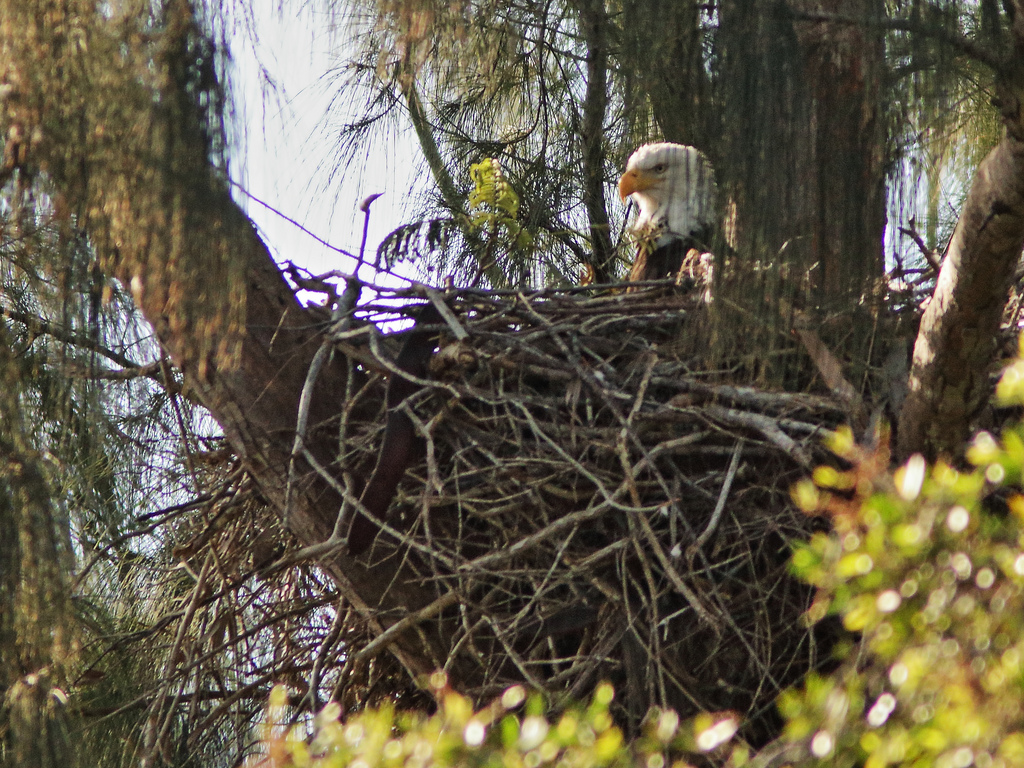 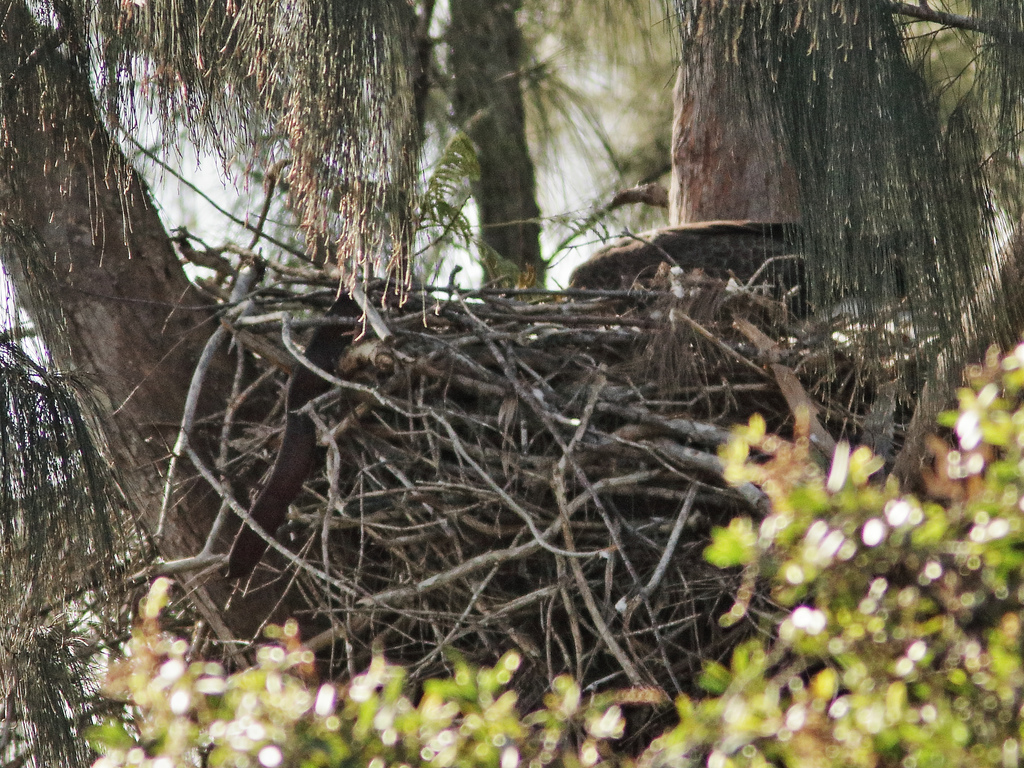 I did not see any direct evidence that Pride was feeding an eaglet, though his head moved up and down. I never saw him holding any food in his beak:  Note that there is a fresh branch of a tree with very tiny leaves and which includes a large seed pod. This is probably from a Mimosa, which is a legume similar to Locust trees. CORRECTION-- This is a Poinciana Tree (AKA Flamboyant), also a legume. "Native to the country Madagascar, this colorful tree is toxic when consumed. The leaves and flowers contain hydrogen cyanide and the pods contain tannins, both of which can cause various side effects to dogs when consumed." See: https://wagwalking.com/condition/poinciana-poisoning I have added a photo of the Poinciana Tree which is directly across from the nest on Pines Boulevard. Note the huge seed pods.  The eagles have been seen breaking off fresh branches from these trees in the past and adding them to their nest. Many legume seeds (including raw Lima Beans) contain noxious chemicals such as alkaloids. Possibly this is a measure to deter parasites such as mites. Also take a close look at the feet of the bird which is upside down in the nest. The feet are bright yellow and legs are black, indicating it is a Snowy Egret. Although the Bald Eagle diet usually consists predominately of fish, our local eagles take a large number of wading birds such as ibises and herons. Poinciana Tree: 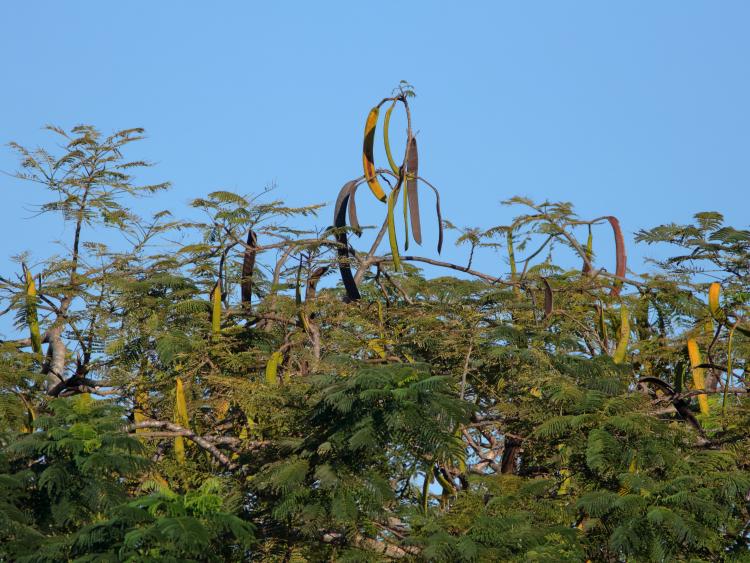
Ken Schneider
Web site: http://rosyfinch.com Blog: http://rosy-finch.blogspot.com Photos: <http://flickr.com/photos/rosyfinch> |
«
Return to ARCHIVED 2018-2019 Observations of Pembroke Pines Bald Eagle Nest BO-002
|
1 view|%1 views
| Free forum by Nabble | Edit this page |

